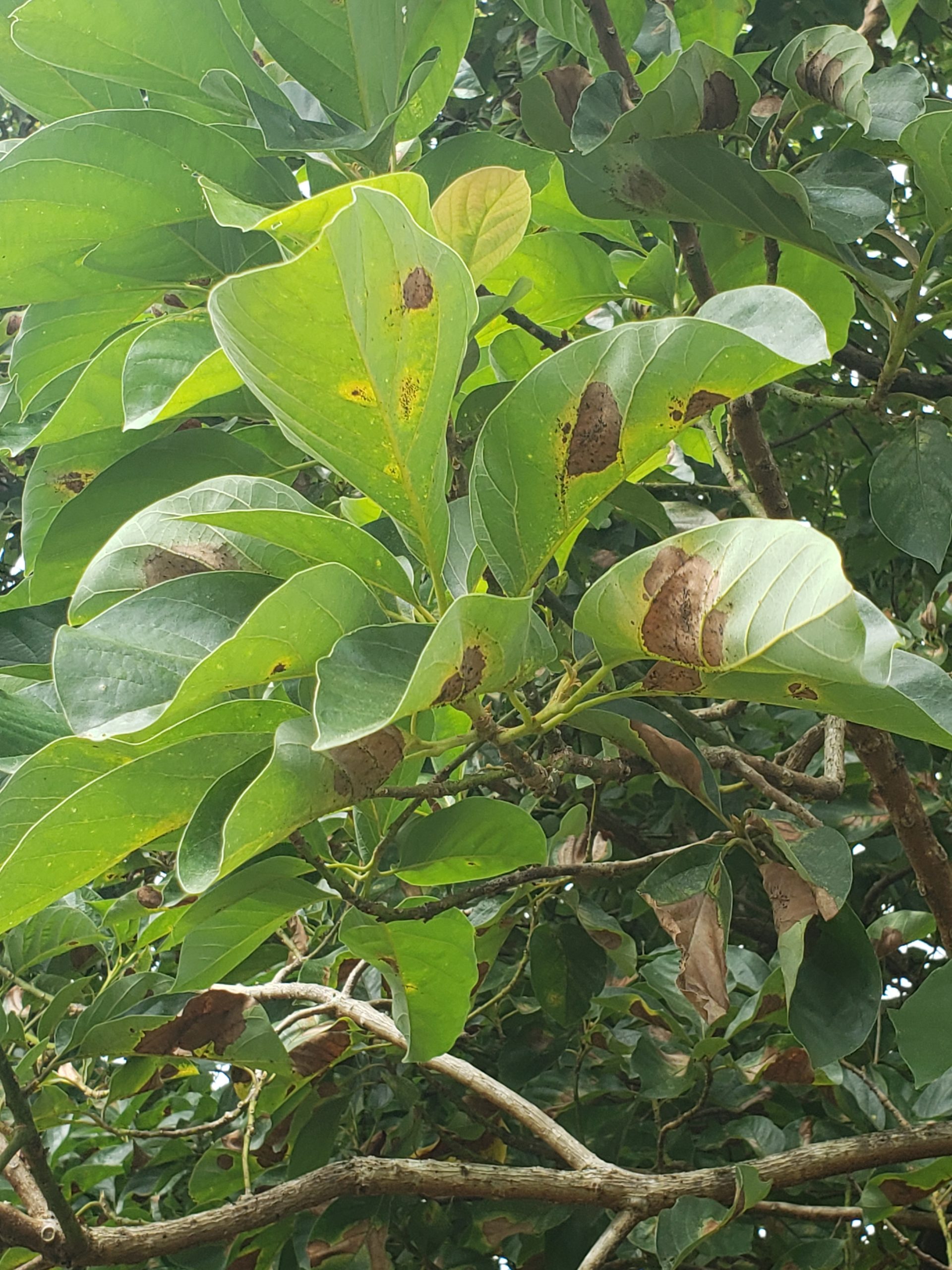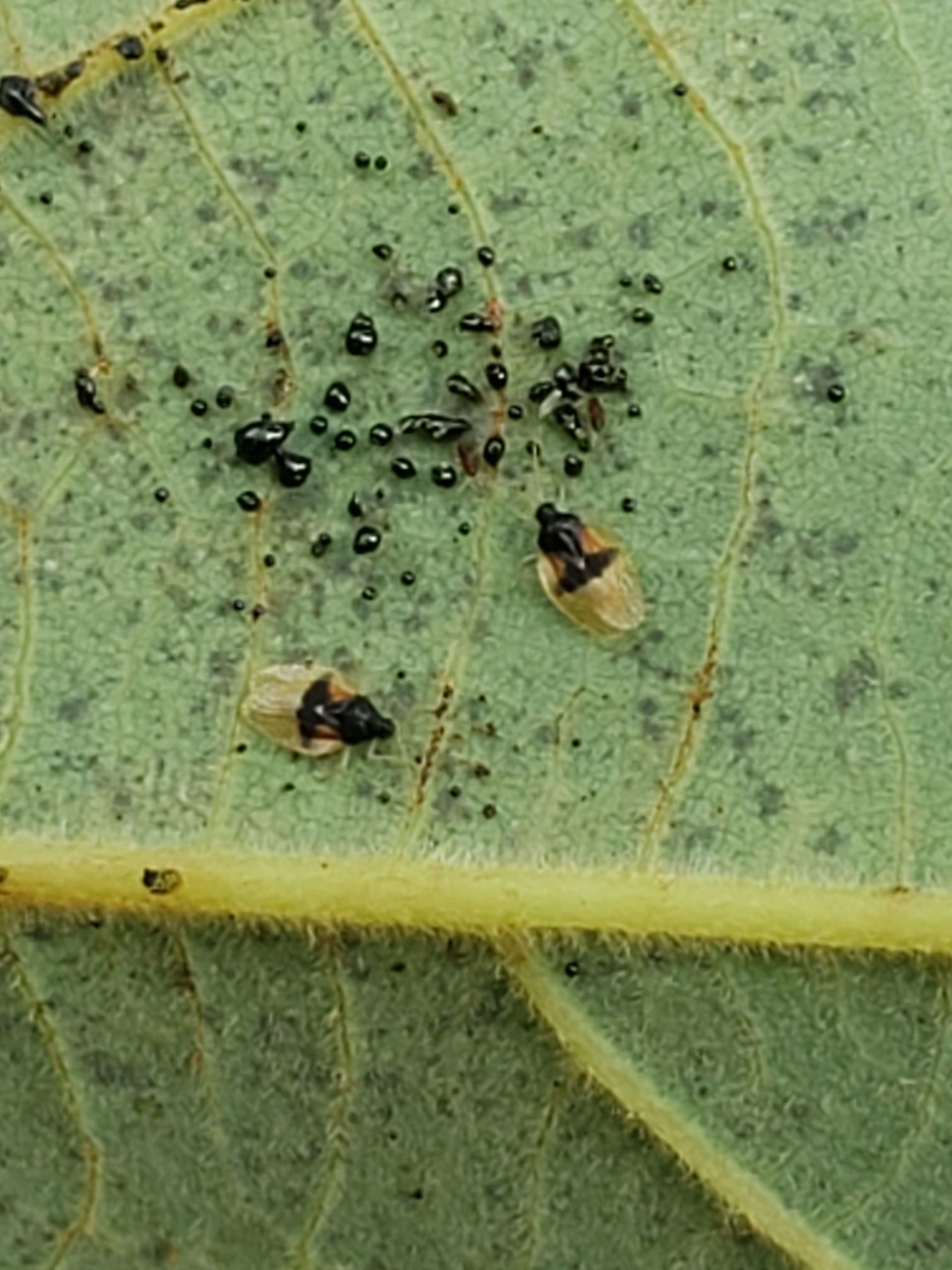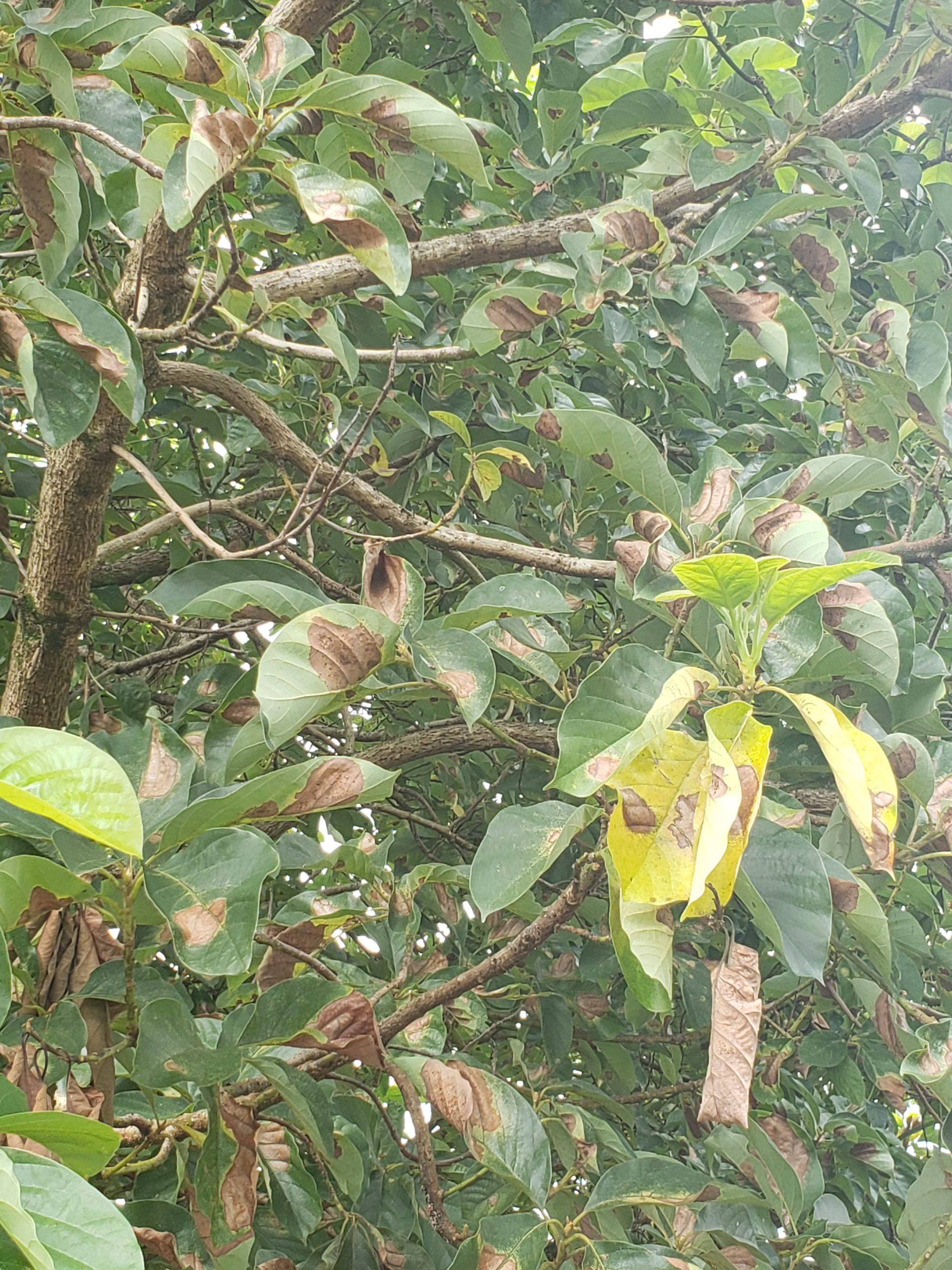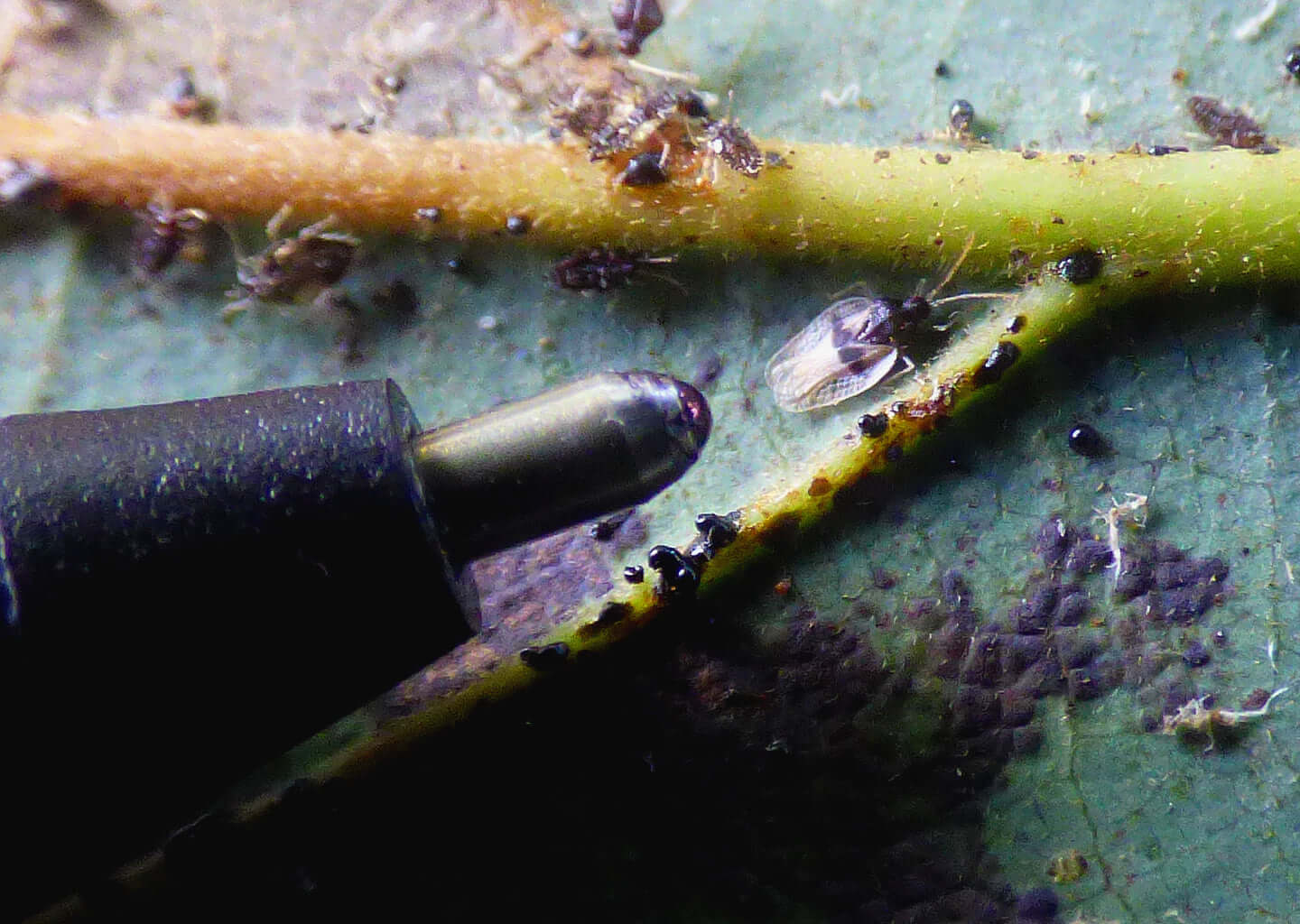
Avocado Lace Bug
This pest is widespread
The avocado lace bug (Pseudacysta perseae) was discovered on Hawai‛i Island in February 2020. There is also known to be on O‛ahu, Maui, and Kauaʻi. This insect goes after all species of avocado and some of the laurel family such as red bay and camphor. These insects cause very noticeable yellowing and brown spots on the leaves where the adults are feeding. These spots start in the center of the leaves.
When flipping over an affected leaf you can find all stages of the avocado lace bug. Adults, immatures, old body casings, and black shiny speckles. These black speckles are poop, where the lace bugs also hide their eggs. Healthy trees can survive an avocado lace bug infestation. Heavy infestations can cause the tree to almost completely defoliate but over time the tree can regenerate its leaves.
Avocado Lace Bug (Pseudacysta perseae)



Photos (L-R): BIISC, BIISC, Oscar Jaitt
Description:
- Adults are about 2mm long
- Yellow/white wings with a black stripe going across the body
- Wings are made up of an intricate network of sections that resembles lace
- Immature lace bugs are smaller than the adults and their lace-like wings are not visable
- 3 week long life cycle, many generations per year
Symptoms of infestation:
- Yellow/brown spots that start at the center of leaves
- All life stages of the insect and black speckles are found on the underside of leaves
- Early fruit drop
Controlling Avocado Lace Bug
Small populations of the avocado lace bug are tolerable and won’t harm the tree in the long term. However, heavy infestations can cause fruit to drop early, and reduce overall tree yields. There are predatory insects that can help control the lace bug population, so avoid spraying broad range insecticides. If the population is very bad there are a few options to pick from.
Keep your tree pruned at a manageable hight. If the tree is too tall it can be very hard if not impossible to effectively treat ALB at the top of the tree.
If your tree is trimmed small enough for you to reach all of the leaves you can use contact sprays such as insecticidal soaps, oils, or Beauveria bassiana (pathogenic fungus) (examples: M-Pede, Mycotrol, Pyganic, or Ecotec). These types of insecticides only affect the insects they come into contact with so make sure that you get good coverage. These need to be applied often, every 2 weeks, in order to control the newly hatched ALB.
For treating taller trees, or if you want to apply pesticides less frequently, you can use a systemic pesticide such as Bio Advanced Fruit, Citrus, Vegetable Insect Control(imidacloprid), or Admire Pro.
Do not treat while the tree is blooming to reduce the risk to pollinators. Whenever using pesticides always make sure to read and follow the label. Avoid using broad spectrum pesticides to avoid killing any possible natural predators to ALB.
If you have a lot of trees to manage you can use a Stihl SR-450 mist blower to get better coverage in an orchard. Make sure to wear proper PPE when using a blower.
Besides treating, keeping your trees in good condition will help reduce the damage from ALB.
- Keep trees pruned
- Fertilize
- Irrigation, make sure tree has water
